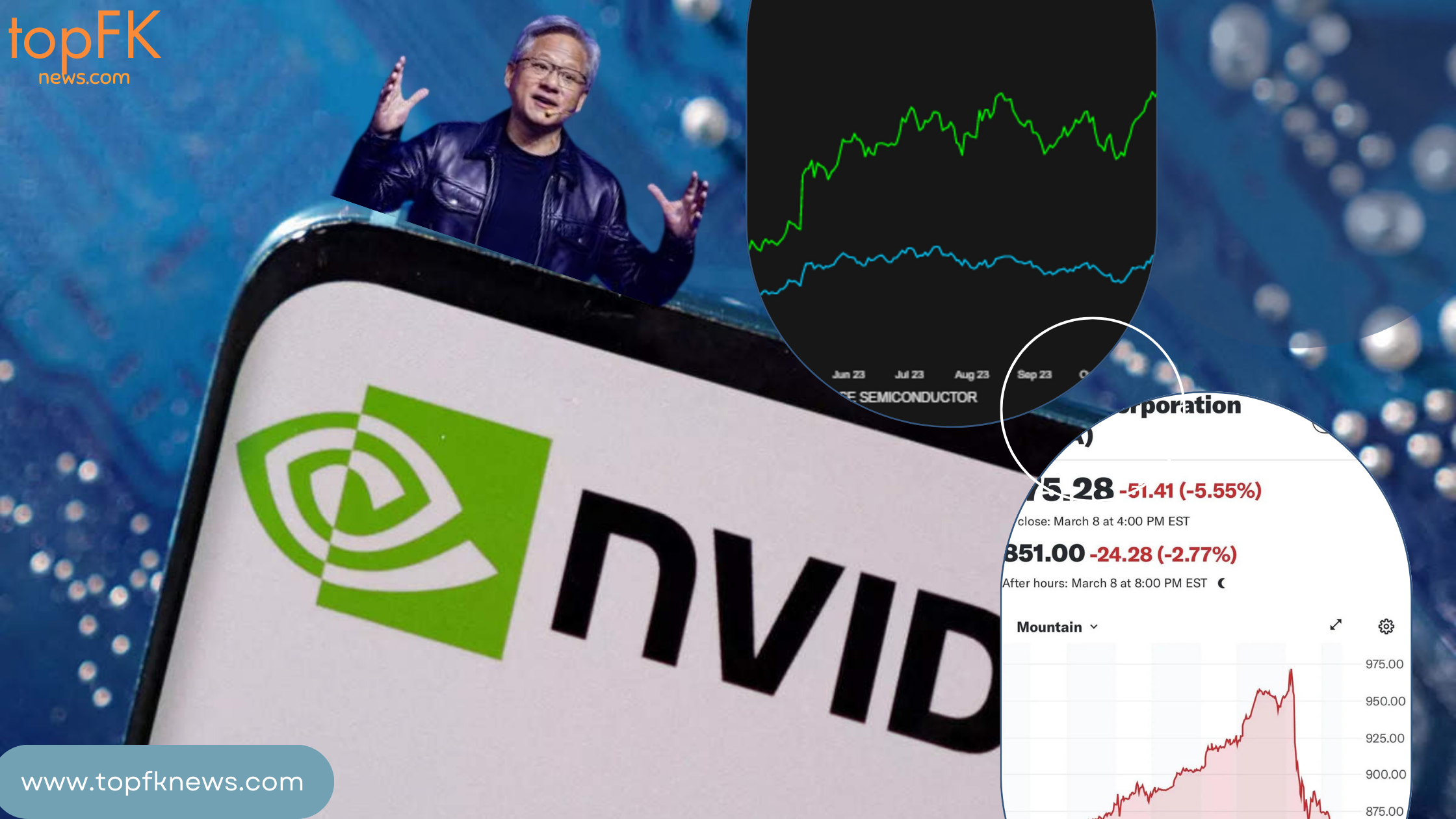After investors were concerned by signs of slowed development and possible manufacturing difficulties, chip manufacturer Nvidia’s shares saw a significant drop Though the company’s second-quarter sales show an amazing 122% increase over last year, questions over the future rate of development surfaced, especially with relation to its next-generation artificial intelligence chips, often known as Blackwell.
Amazing Revenue Growth Oversaw by Future Uncertainty
More than tripling from the previous year and above average analyst projections of $28.7 billion, the Silicon Valley behemoth revealed revenues of $30 billion (£23 billion for the second quarter. Still, this astonishing expansion was insufficient to allay market worries. The emphasis moved to the future, particularly in view of possible delays in the manufacturing and delivery of Nvidia’s next Blackwell artificial intelligence processors.
In pre-market trading, the stock dropped as high as 7%; subsequently, it corrected some losses to reach a 3% decrease. With a market capitalization of $3.1 trillion, Nvidia stays third most valuable corporation worldwide despite this decline. The company’s valuation has been substantially influenced by its leadership in the chip-making sector and vital importance in the artificial intelligence (AI) market. But among investors closely observing Nvidia’s ability to sustain its fast expansion path, the possible delay in delivering Blackwell chips has caused concerns.
Problems in Blackwell Chip Production Call Attention
Nvidia said that many months will pass between the originally scheduled January release and the delivery of the Blackwell chips, which are necessary for training big language models. Comprising 208 billion transistors, these processors provide a major advance in artificial intelligence processing capability. Previously stressing that Blackwell will provide significant income for Nvidia in the current year, Jensen Huang, the CEO of the firm, had said The delay has, however, cloud these expectations.
“There were just some signs around the edges in numbers that that rate of growth was trying to slow,” Simon French, head of research at Panmure Liberum, said on the matter. He said that although Hopper, the next-generation Blackwell’s current AI processor, is selling well, manufacturing delays have been reported, which would have led to the stock’s post-market drop even if Nvidia’s present AI chip is doing well.
When talking with media and investors, Nvidia’s leadership did not provide particular information about the degree of the Blackwell delivery delay. They reassured interested parties, nevertheless, that TSMC, the Taiwanese semiconductor company in charge of manufacturing Nvidia’s most sophisticated processors, had fixed the production problems. Although early Blackwell samples are now being sent to a small selection of clients, the delay has indeed introduced some uncertainty to Nvidia’s future development projection.
Effects on Investor Mood and the Greater Market
The drop in Nvidia’s share price has knock-on effects for the US stock market generally, especially the S&P 500 index. About 6% of the index’s entire value, Nvidia makes up a sizable portion of its gains this year. The company’s stock has jumped more than 160% over the previous 12 months, which helps to explain the performance of the larger market. But the S&P 500 has suffered from Nvidia’s recent declining share price, underscoring the company’s disproportionate impact on the index.
Analyst Matt Britzman of Hargreaves Lansdown pointed out the difficulties Nvidia has fulfilling market expectations. “It’s less about just beating estimates now; markets expect them to be destroyed; it’s the scale of the beat that looks to have disappointed a touch,” Britzman said. He underlined that although Nvidia has often exceeded forecasts, the present climate calls for even more significant outperformance to please investors.
Many investors have embraced artificial intelligence’s ability to transform many sectors all around. Simon French pointed out, nevertheless, the pragmatic uses of artificial intelligence have yet to be completely realized, and Nvidia’s stock’s great expectations are based on both its present performance and expected wider economic effect. ” Such are the high expectations for this stock, not just as a single company but also its greater economic impact,” French said. “You have to keep growing at amazing rates if you are going to generate such high expectations.”
Long-Term Vision and Prudence Amid Changing NVDA Premarket Conditions
Although the immediate market response to Nvidia’s quarterly earnings has been unfavorable, several experts warn against basing too much interpretation on one set of figures. Britzman counseled investors on the long-term future of Nvidia and the larger artificial intelligence sector. Companies like Microsoft, Tesla, and Meta are working on multi-year, even multi-decade schedules, and investors would be smart to use a similar strategy when assessing Nvidia’s prospects, he said.
“That many artificial intelligence bears fall back on, simply isn’t the main consideration for Nvidia’s biggest customers at this stage,” Britzman said. “Like many before, this cycle won’t be a straight line but while the ‘build it and they will come’ approach continues, it plays right into Nvidia’s hands.”
In essence, even if worries about slowing down development and manufacturing delays have caused short-term impact on Nvidia’s share price, the company’s long-term prospects in the AI area remain strong. Investors should keep a long-term view and take into account the wider possibilities of Nvidia’s technical developments while the business negotiates the difficulties of fulfilling high expectations in a developing sector.

